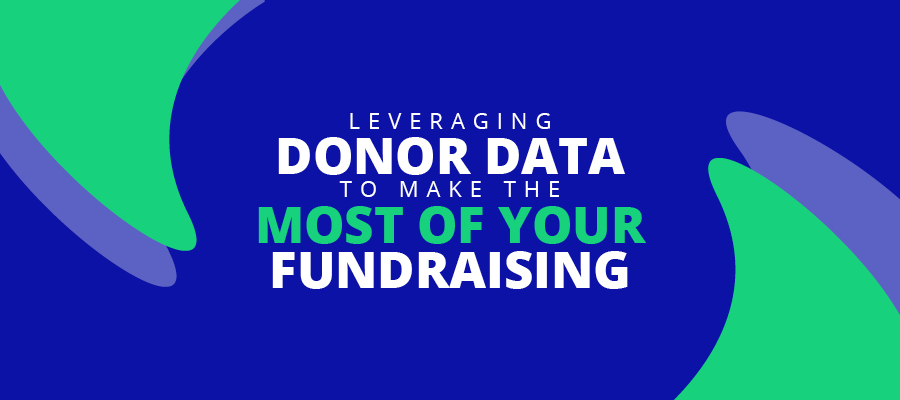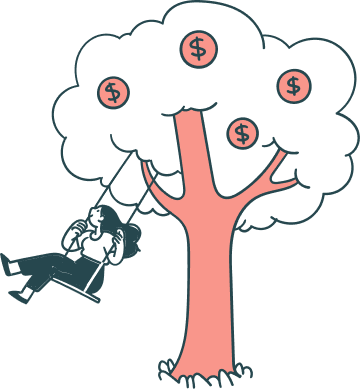During the age of COVID-19, maintaining relationships with your supporters is likely full of more challenges than ever before. This is because when everything went virtual, your organization probably had to find some new methods of communication with your supporters.
Many organizations have struggled to fundraise during this time while others have flourished. No matter how your organization has done so far with your fundraising, you probably have a whole host of new data to work with.
Data is the bread and butter of an effective fundraising strategic plan. When you leverage the data you’ve collected from supporters, you can forge better connections and further develop relationships.
At Bloomerang, we’ve helped thousands of nonprofits to develop their fundraising strategies using the data they store in our retention-focused database. From our experience, we’ve developed a list of strategies that nonprofits can use to leverage their donor data to the greatest extent:
- Keep track of your newly acquired donors.
- Focus on improving your donor retention.
- Estimate the best amount to ask for.
- Locate your next major prospect.
Ready to learn more? Let’s dive in.
Focus on improving your donor retention.
Successful fundraising strategies start with building relationships. When you build relationships with supporters, you don’t limit yourself to accepting one donation from them but encourage them to donate again and again, increasing your donor retention rate.
Donor retention is a vital key performance indicator (KPI) for your fundraising strategy that you should keep an eye on because it can dramatically impact the amount that you can fundraise. Just increasing your donor retention by 10% can help your organization save funds and raise hundreds of thousands more over the years.
How can you assure this increase in your own retention? With donor data. Leverage your donor data to start building relationships and help you retain donors. You can use the data you already have stored to create personal connections with your supporters.
For example, let’s compare the stories of Bim and Ben. Bim and Ben both contributed to different nonprofits that focused on teaching music to children.
When Bim donated to the nonprofit, he received a generic thank-you email that looked something like this:
Dear Donor,
Thank you so much for your generous donation. You play an amazing role in helping the 10,000 students we work with to learn different genres of music. Please consider subscribing to our newsletter so that you know about all of the other amazing opportunities to get involved.
While this is a perfectly nice letter to receive after donating, it doesn’t do much to stand out from the pack. For starters, it’s fairly generic and doesn’t include any personal information that pertains specifically to Bim.
Compare the above email message to the one below that Ben received after his donation to a similar nonprofit.
Dear Ben,
Thank you so much for your gift to the Tubas for Tots campaign. Your generous donation of $50 will help provide instruments for 5 children in the community. Every year the Tubas for Tots campaign provides instruments that help keep the music programs alive at low-income schools in the community.
This is just one of the many fabulous campaigns we host each year. Please click here to subscribe to our monthly newsletter so that you can stay informed about the other amazing programs that you can become a part of to help children everywhere find love in music.
This second message used key data that was collected during the donation process in order to form a more personal connection with Ben. It used his name in the salutation, mentioned the amount that he donated to, gave more context about the campaign he contributed to, and provided an actionable step he can take after reading the email. Because of these personal elements, between Bim and Ben, Ben will be more likely to contribute again.
That’s the first important way that fundraising leaders like you can leverage data, to create personalized connections with supporters and increase donor retention.
Not only does it make sense that data-based strategies would drive better results, but it’s also statistically proven. According to Accudata’s data marketing guide, “marketers who used data-driven campaigns experienced over 5 times ROI compared to the marketing spend to initially hold the campaigns.” Therefore, when you correspond with your supporters, be sure to always include personal details such as their:
- Preferred name
- Campaign contributed to (if applicable)
- Frequency of their donation (“thanks for your first gift,” “thanks for being a loyal supporter,” etc.)
- Interests they have regarding your mission
If you have trouble fitting these personalized communications into your nonprofit’s strategy, you can always reach out to a nonprofit fundraising consultant for help. They can help you devise a plan to best make connections with your supporters and add these personal details into regular communications to boost retention.
Keep track of your newly acquired donors.
One of the fastest ways to increase your donor retention rate is to look at one particular metric as you adjust your strategy. This metric is your rate of first-time donors. While the average donor retention rate rests close to 40%, diving deeper can give you a closer picture.
Almost 80% of first-time donors only give that one contribution. Meanwhile, after the second donation is captured, that donor is around 60% more likely to give again.
This staggering difference is why the second donation made to a nonprofit is frequently referred to as the “golden donation.” After it’s been contributed to an organization, it’s much more likely that the donor will continue to give in the future.
Therefore, as you focus on retention and reaching your nonprofit’s fundraising goals, be sure to leverage your data to specifically reach out to your first-time donors.
Your first-time donors should have their own specific data segment in your nonprofit’s CRM. Then, you can reach out to them with specific messaging for stewardship and to capture the “golden donation.”
Create a first-time donor communication timeline that spells out each of the steps that you should take to secure fundraising success with these key individuals. For instance, you might include the following on the timeline:
- The initial thank-you after the donation
- An appreciation phone call from a staff member
- Email newsletters informing about upcoming activities
- The solicitation for a second gift
You may have slightly less personal information to work with when it comes to personalizing messages for your first-time donors. Generally, when supporters give via virtual fundraising form, they only provide basic information such as their name, contact information, and campaign to which they’re donating.
However, this doesn’t mean you shouldn’t get personal! Use the information you have to the best of your ability. Then, when you call supporters, request surveys, and otherwise communicate with them, make note of the additional information you collect and use it for future interactions.
Estimate the best amount to ask for.
So far, we’ve primarily discussed how you can use your data to best communicate and build relationships with your supporters. However, one aspect of your fundraising strategy that is much more directly related to fundraising revenue is your ask amount.
When you go to supporters to ask for gifts to your campaign, especially your mid-tier to larger donors, you should already have an idea of how much you’d like for them to contribute. Rather than just pulling a number out of thin air (a highly unwise decision), make sure to estimate how much that person will be likely to contribute based on quantitative information. Then, when you ask for that amount, they’re most likely to give what you need.
There are a couple of resources you can use to collect data for analysis that can help you determine the ask amounts for your nonprofit’s campaign:
- Information in your donor management system. Your donor management system is your central hub of information that you’ve collected over the years regarding your organization’s supporters. Look at each donor’s historic donations to see where they’ve been comfortable giving so far and how often they contribute that amount.
- Prospect research databases. Prospect research pulls public wealth and philanthropic information from various sources and can help supplement already stored in your donor database. For example, you can make inferences about a supporter’s wealth based on their stock holdings, property ownership, and political contributions. These factors can help you choose an appropriate ask amount.
With this information, you’ll be able to plan out your campaigns as well. For instance, if you’re launching a capital campaign, you might choose to create a gift range chart that can help guide your fundraising and ensure you get the funds you need for success.
While these charts are primarily used for capital campaigns, they can also be used for any other major fundraising initiative that your organization hosts.
After you’ve put together your gift range chart, you can start combing through the information you have about your supporters from your CRM and prospect research, then decide how much to ask for based on the chart. If a supporter seems hesitant to make a contribution at your first ask amount, you can go to the next one down until they’re comfortable.
Locate your next major prospect.
You can use the same information that you used to choose an ask amount to locate your organization’s next major donor prospects. However, there’s one more data metric that you’ll need to add to your calculations in order to choose effective prospects: engagement.
In the last section, we talked a lot about how you can use wealth information to decide how much a supporter might be willing to contribute to your cause. But engagement information will help you determine if supporters are willing to give large donations to your organization.
Supporters who are most likely to contribute to your nonprofit are those who have both high engagement metrics and generosity metrics already stored in your CRM.
For instance, let’s bring back Bim and Ben. Bim and Ben both have the wealth capacity to contribute $10,000 to the same nonprofit focused on bringing music to children. However, they have slightly different engagement histories with the organization:
- Bim gave on a consistent basis, contributing about once per year. However, he doesn’t always open the emails from the organization and rarely attends events. He hasn’t filled out surveys and tends to ignore calls from the organization. He believes in the cause, but doesn’t have the time to get more involved than his annual contribution.
- Ben, on the other hand, also gives about once per year (and at the same amount as Bim). But, he is very involved. He has called the organization multiple times throughout the year to ask questions about projects and to provide feedback. He loves long phone conversations with the major gift officer, who he has met at numerous events and on his tours of the organization’s facilities.
Ben is a highly engaged supporter and will be the more likely of the two to contribute a major gift to the organization.
While we all dream of the generous stranger who swoops in to contribute thousands or millions of dollars to our organization, this rarely ever happens. Much more frequently, major donors are those who have been involved with the organization for years and have been carefully identified and stewarded by the development team.
Donor data is a vital part of any nonprofit’s fundraising strategy. You need to use data to build relationships, increase donor retention, and identify your most valuable supporters. Therefore, your data needs to be well-organized and carefully collected from the very beginning of your engagement with supporters. Make sure to invest in a donor database that will help you collect, store, and leverage data in the most effective manner so that you can see all of the benefits it can bring. Good luck!
This guest post was contributed by Jay Love of Bloomerang.
Jay Love is the Co-Founder and current Chief Relationship Officer at Bloomerang. He has served this sector for 33 years and is considered the most well-known senior statesman whose advice is sought constantly.
Prior to Bloomerang, he was the CEO and Co-Founder of eTapestry for 11 years, which at the time was the leading SaaS technology company serving the charity sector. Jay and his team grew the company to more than 10,000 nonprofit clients, charting a decade of record growth.




